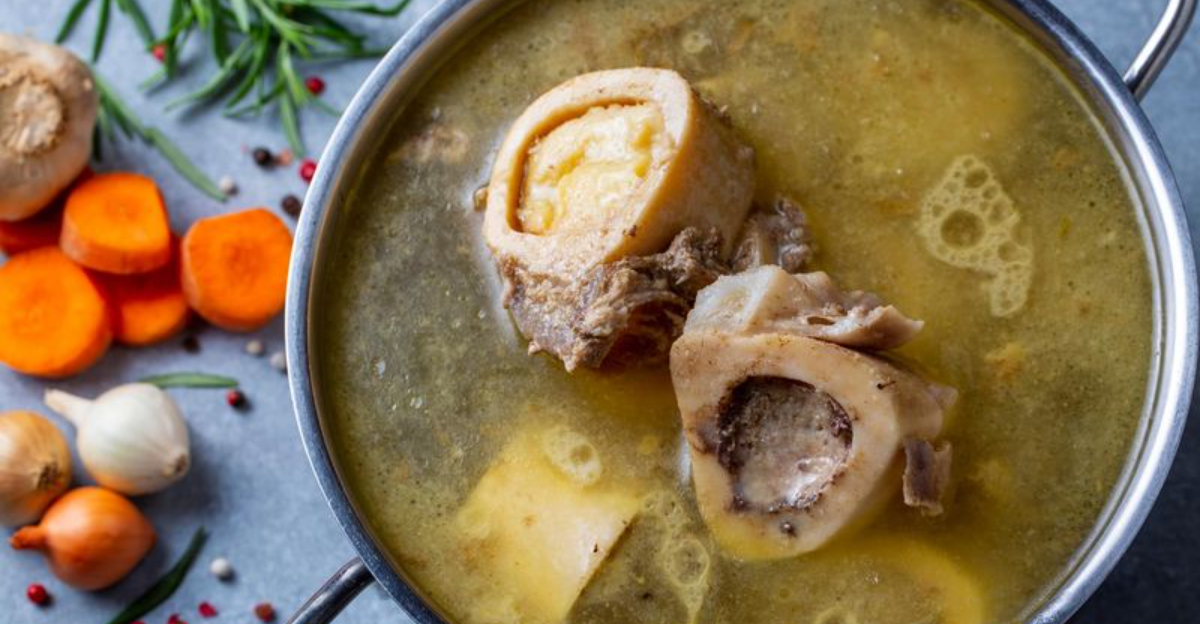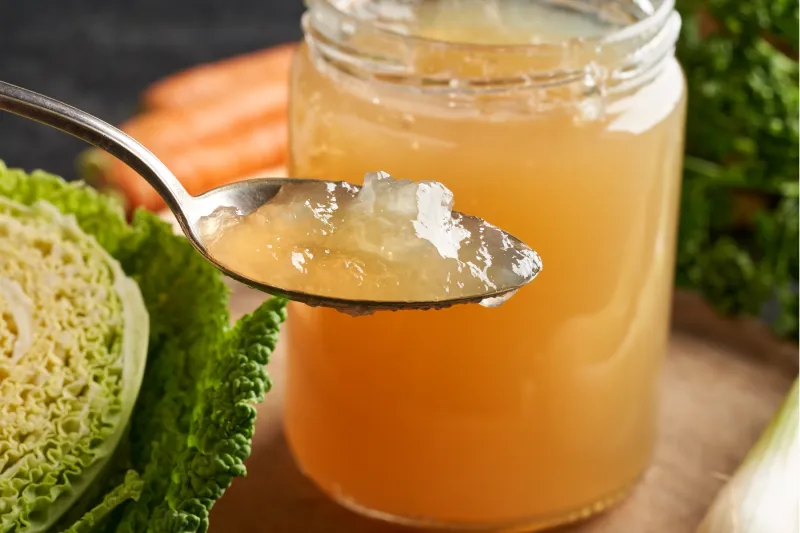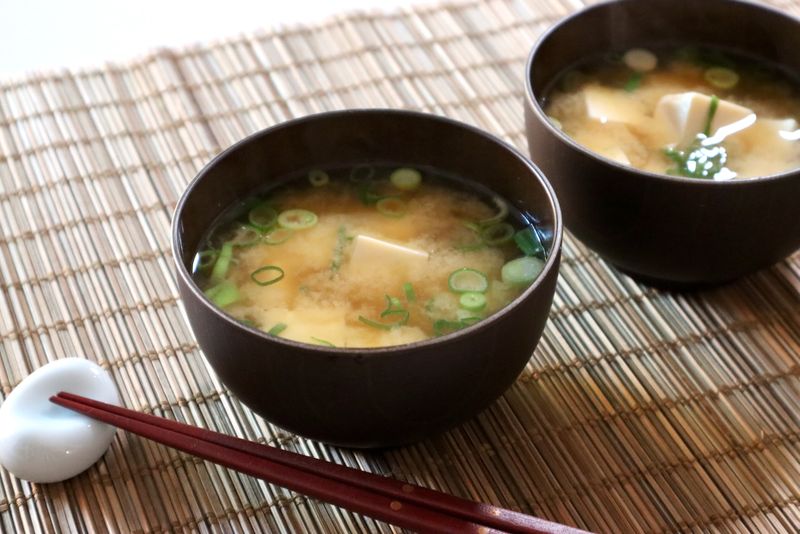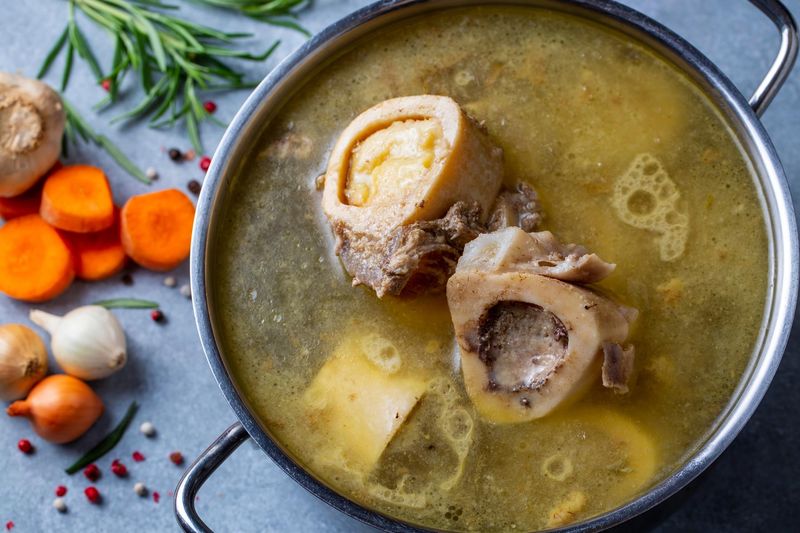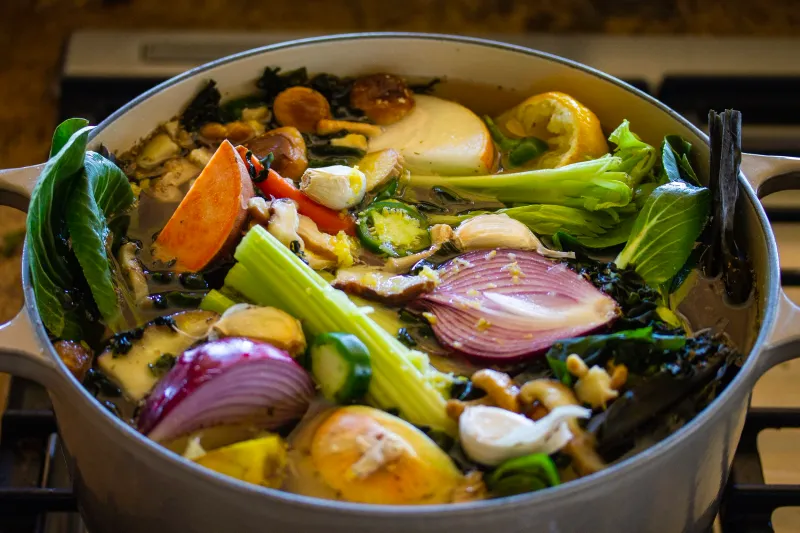I simmered four distinct broth bases side by side to discover which one truly delivers the deepest, most satisfying flavor. Along the way, I learned how small choices—bones vs. vegetables, miso styles, roasting steps—can dramatically change body, aroma, and clarity. If you’ve ever wondered which broth deserves your weeknight stove time, this test pulls no punches. Stick around to see which base crowned itself king of depth and how to get there in your own kitchen.
1. Chicken Bone Broth
Slow-simmered chicken bone broth builds luscious body from collagen while staying clean and versatile. I roast wings and backs until golden, then add onion, carrot, celery, garlic, peppercorns, and a splash of apple cider vinegar.
A gentle simmer—never a boil—keeps it clear and silken. After eight hours, it gels in the fridge, signaling deep extraction. The flavor lands savory and comforting, ideal for risotto, pilafs, or sipping straight. Its adaptability makes it my go-to baseline.
For brighter lift, finish with parsley stems and lemon zest. It’s the crowd-pleaser, balancing depth with weeknight practicality.
2. Miso Broth
Miso broth is umami on speed dial, yet surprisingly nuanced. I whisk white or red miso into warm dashi made from kombu and bonito flakes, off heat to preserve probiotics and delicate aromatics.
White miso offers gentle sweetness; red brings intensity and salt. Depth comes from layering: a knob of ginger, a splash of sake, or sesame oil at the end. This broth excels with tofu, mushrooms, and soba, lending savory sophistication without long simmering.
It doesn’t coat the palate like bone broths, but its clarity and savory pop feel modern and focused—an elegant weeknight powerhouse.
3. Beef Bone Broth
Beef bone broth dominates in depth when you want unapologetic richness. I roast marrow and knuckle bones until deeply browned, then simmer with onions, carrots, tomato paste, and a touch of red wine for complexity.
Long extraction—12 to 18 hours—yields a mahogany broth with gravitas, ideal for French onion soup, braises, and pan sauces. Gelatin gives it velvet weight; roasted aromatics add bass notes and mild sweetness.
Skim diligently for clarity, and finish with a whisper of vinegar to brighten. It’s the heavyweight champion—massive, meaty, and lingering—best deployed where boldness is the point.
4. Vegetable Broth
Vegetable broth wins on speed and clarity, offering a clean canvas that still has character. I layer onions, leeks, fennel tops, celery, carrots, mushrooms, and tomato scraps, plus kombu for subtle backbone.
A short 60–90 minute simmer prevents bitterness and keeps flavors bright. Black pepper, bay, and parsley stems add lift; avoid too much brassica. Roasting mushrooms and onions first boosts savory depth without heaviness.
This broth excels in risottos, light soups, and grains where freshness matters. It won’t rival beef for darkness, but its nuanced, herbaceous profile makes vegetables sing and keeps dishes vibrant.
